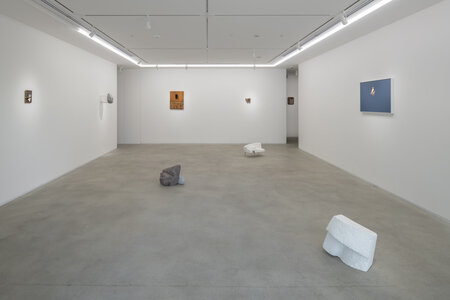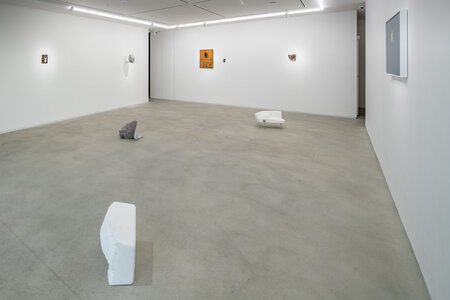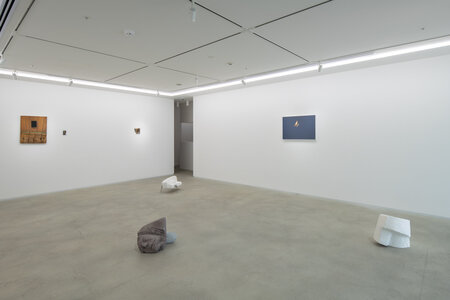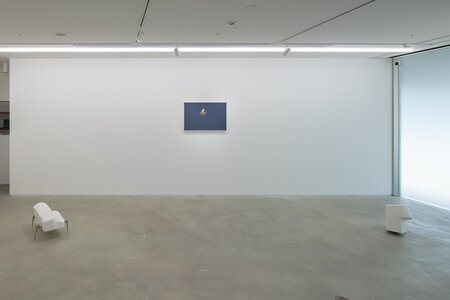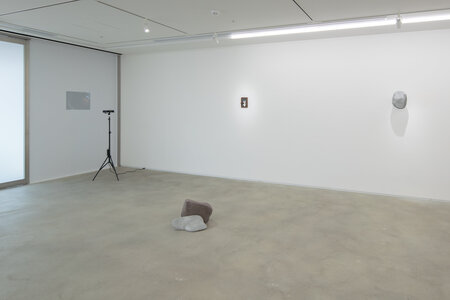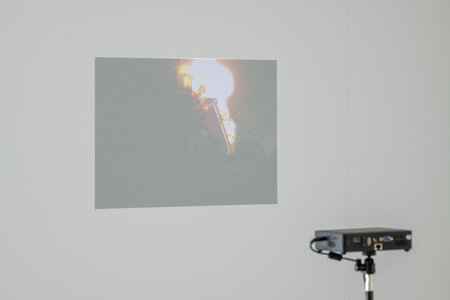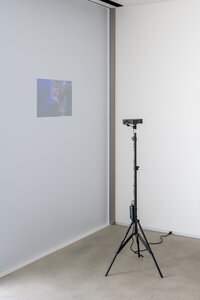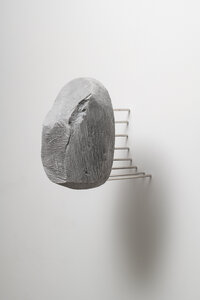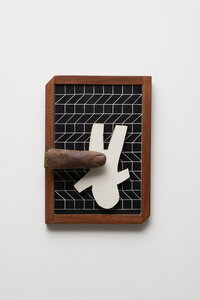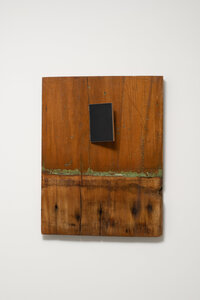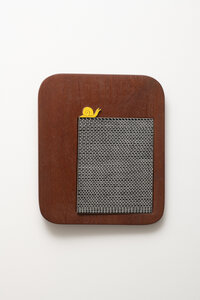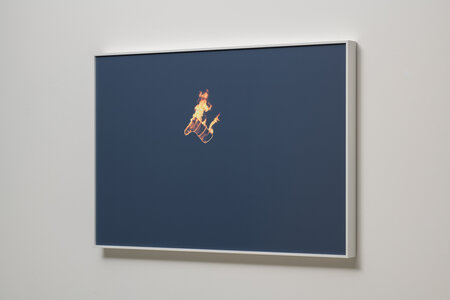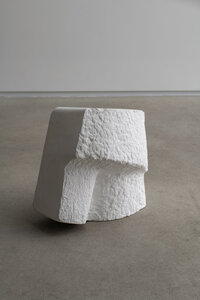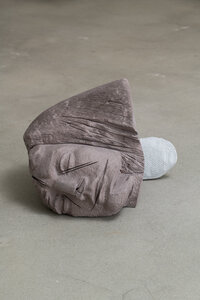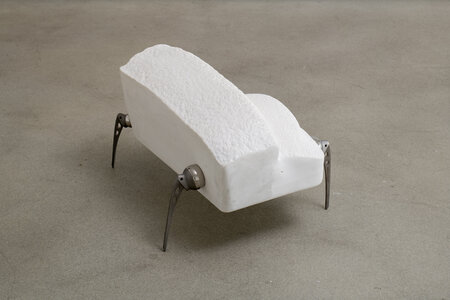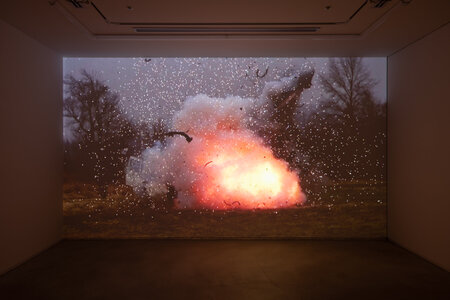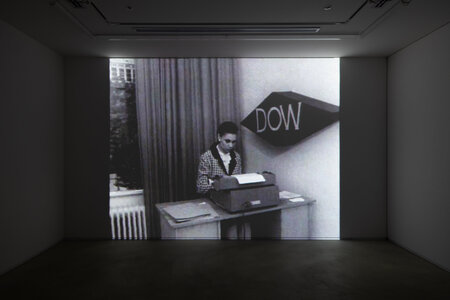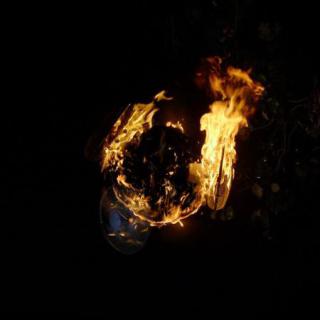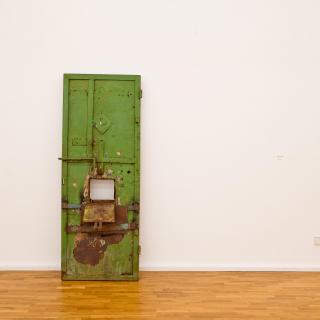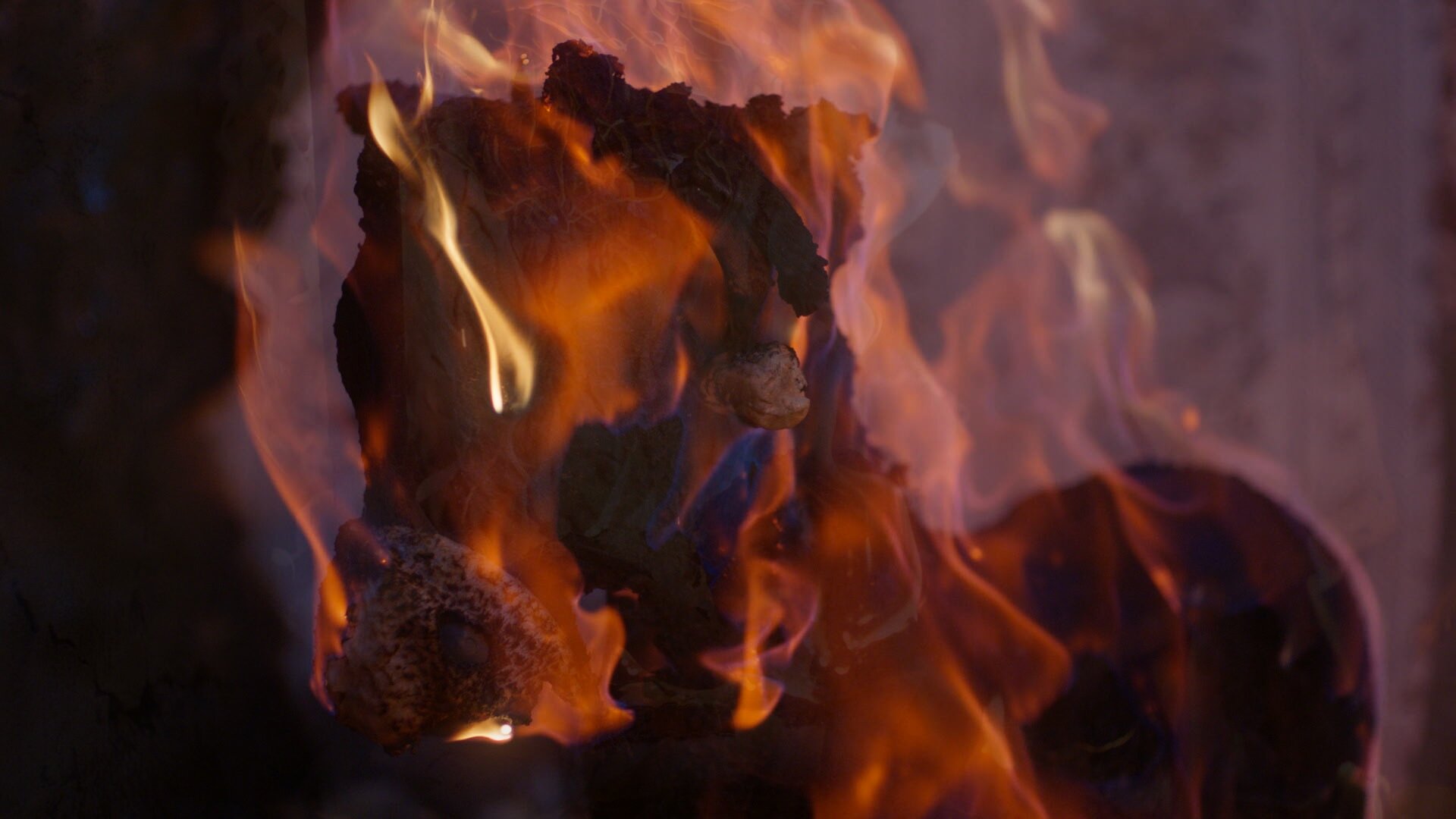
"The Warm Winter Sun" 2022, Single channel 4K video (color, sound) , 18min 7sec
SCAI PIRAMIDE SCREENING PROJECT vol. 2 - Inextinguishable Fire
Vajiko Chachkhiani
Will Rogan
Harun Farocki
Apichatpong Weerasethakul
Opening hours: 12:00 - 18:00
Closed on Sun., Mon., Tues., Wed. and National Holidays
*Open on Thu. 2, Fri. 3 and Sat. 4 November for Art Week Tokyo
Cooperation: Misako and Rosen, Harun Farocki GbR, Goethe-Institut Tokyo
SCAI PIRAMIDE presents a screening project vol.2 by Vajiko Chachkhiani, Will Rogan, Harun Farocki and Apichatpong Weerasethakul. The title of the exhibition is taken from Harun Farocki’s meta-documentary based on his reflections on the Vietnam War and napalm bombs. With screening each artist’s perspectives developed upon fire, three-dimensional pieces and the installation selected and constructed in accordance with the theme are on display in the first room.
Vajiko Chachkhiani (b.1985, Georgia) is known for his sculptures and installations dealing with memories and traumatic events in history both in personal and in social. The Warm Winter Sun (2022), depicts a middle-aged man returning to his rural family home where he spent his childhood. With figures of symbolic objects reflecting his experiences or painful recollection, the house begins to burn with the intensity of the fire set by the man. However, the ghostly images of his family and his young self, float in the flames, questioning to such an extreme act by the man to make a break with the past. Chachkhiani’s three-dimensional pieces, using copies of public sculptures derived from the period of World War II, are an expression of his intervention into the historical context, while the body parts such as face or hands appear to be burnt-out remnants of his film.
American artist Will Rogan (b. 1975, USA), known for his sculptural expression using found objects, presents a short film that transforms a few seconds of a hearse explosion into a surreal 8 minutes event through slow motion, in parallel with his objects featuring enigmatic motifs including keys or fingers. His The Eraser (2014), characterized by a tinge of irony, with a delayed explosion of a hearse as an analogy of a defiant posture against an absolute death, could also appear to be a thorough commitment to an annihilation by attempting to erase a death twice.
Harun Farocki (b. 1944, Czechoslovakia, d. 2014, Berlin), a master of German experimental film and theorist, confronts us with a timeless contemporaneity revolving around a reflection on the Vietnam War in Inextinguishable Fire (1969). The title, which is the properties of napalm bombs, is a symbol of the irreparable trauma that humanity passed through, and seems to suggest that it is still burning. Farocki had been made experimental films that explore the problems behind labor, war, technology, and structures of contemporary society. Made nearly 30 years ago, the film with an outstanding modernity makes us ponder on our responsibilities of what has happened in the past.
Apichatpong Weerasethakul (b. 1970, Thailand) has also worked on the theme of “fire” in his various projects. The installation composed by photographs and a video set on the wall of the first room refers to “fire”, which, for him, is a part of the relationship with illusion. Fire Garden (2016), shooting the landscape of his hometown just before the arrival of a typhoon, with the overlapping outlines of fire sparks in the nature of Chiang Mai, renders a unique attractiveness. In terms of fire, Weerasethakul also mentions the cycle of destruction and creation it engenders.
Can the history and the scars it leaves behind - both in the individual and in the society - ever be extinguished? The fire continues to burn. Or, perhaps, the perspective that “what matters most is how well you walk through the fire”※1 could give a clue to this unanswerable question.
※1 From “What Matters Most is How Well You Walk Through the Fire” by Charles Bukowski, Published from ECCO in 2002
